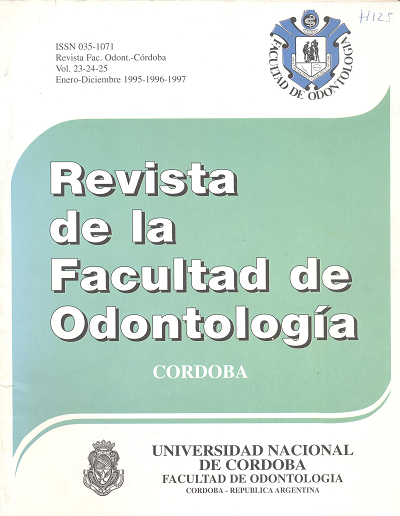Estudio estructural y morfométrico de las glándulas salivales de gorrión (Passer Domesticus) durante invierno y verano
Keywords:
Birds, Histology, Salivary GlandsAbstract
Key Words: House sparrow. Salivary glands. Histophysiology. Morphometry.
An structural, cytochemical and morphometric study of the salivary glands of the House sparrow was made, with the purpose of detecting their probable histophysiological adaptatio!'s in relation to diet and nutritional needs according to seasons of the year. 40 sparrows from "Villa Los Aromas" (Alta Gracia) and gathered in winter and summer were used. Samples of the oral cavity were studied with H/E, PAS, Alcian Blue and Toluidine Blue. The quantitative analysis of the development and size of.the glands was perforrned according to the method of !Gelian and Cohn. No structural or cytochemical modifications were observed in the different glands. The proportion eltisting among the different glands (angularis oris, maltillary and internal and external mandibular) shows statistically significative differences, and these differences rernain constan! through the seasons of the year studied. It is concluded that these glands do not exhibit variations in winter and surnmer, perlad in which vegetation and fauna are modified and the disponibility of alimentary sources varies. The constan glandular pattern during these seasons would be a consequence of the species gene tic determination, associated to a diet that is probably similar in winterand sumrner wbere vegetable and animal components would combine in relation to seasonal rnetabolic requirements.
Downloads
Published
Issue
Section
License
Aquellos autores/as que tengan publicaciones con esta revista, aceptan los términos siguientes:
- Los autores/as conservarán sus derechos de autor y garantizarán a la revista el derecho de primera publicación de su obra, el cuál estará simultáneamente sujeto a la Licencia de reconocimiento de Creative Commons que permite a terceros:
- Compartir — copiar y redistribuir el material en cualquier medio o formato
- La licenciante no puede revocar estas libertades en tanto usted siga los términos de la licencia
- Los autores/as podrán adoptar otros acuerdos de licencia no exclusiva de distribución de la versión de la obra publicada (p. ej.: depositarla en un archivo telemático institucional o publicarla en un volumen monográfico) siempre que se indique la publicación inicial en esta revista.
- Se permite y recomienda a los autores/as difundir su obra a través de Internet (p. ej.: en archivos telemáticos institucionales o en su página web) después del su publicación en la revista, lo cual puede producir intercambios interesantes y aumentar las citas de la obra publicada. (Véase El efecto del acceso abierto).

